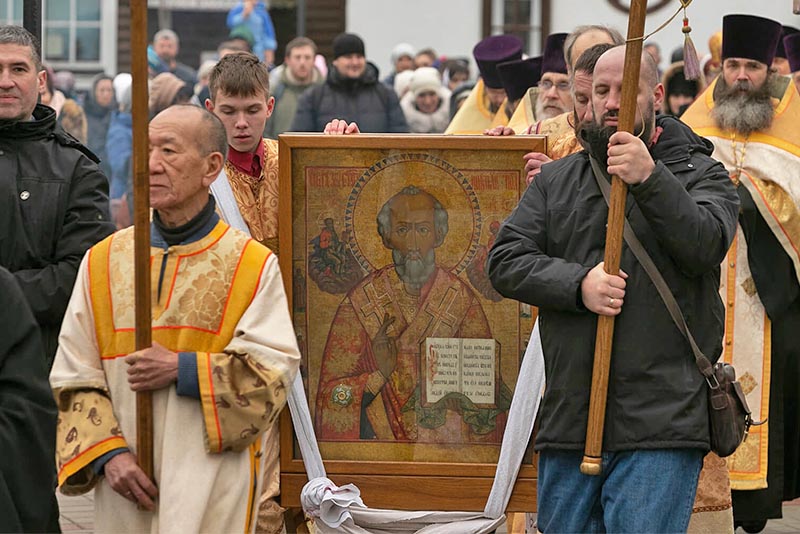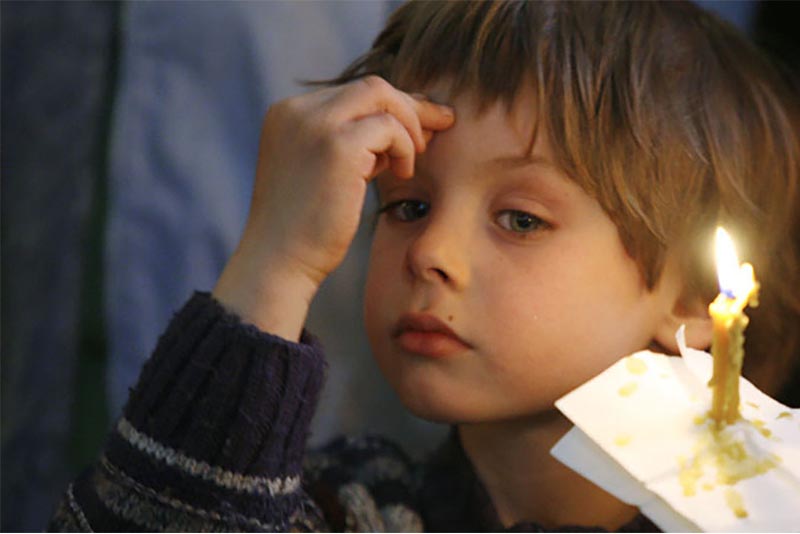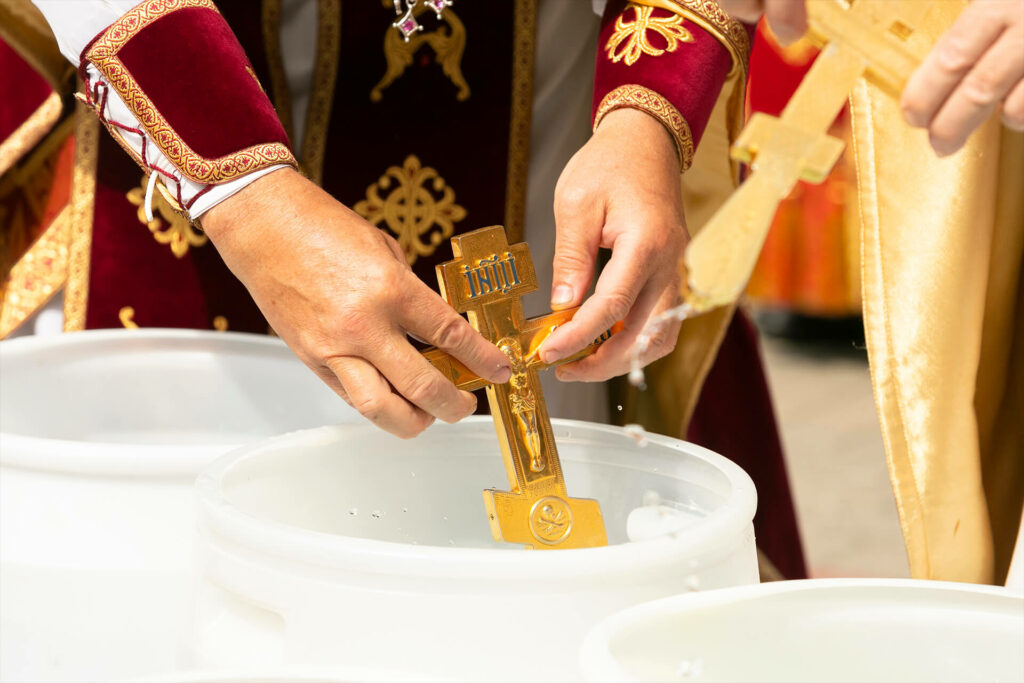
Church Statutes have no rules about the colours of the liturgical vestments. In practice, however, it is customary for the clergy to wear certain colours on specific days and occasions.
What the colours of the liturgical vestments mean
The colours of liturgical vestments speak with the symbolic language of the Orthodox icon. They represent the three dimensions of space. Each earthly colour is an image and expression of God’s divine light and radiance.
Some colours, therefore, are used more than others, and some do not occur at all. Brown, for example, is taboo, because it represents the worst and filthiest things on this earth.
Yellow, the colour of the kings
Yellow or gold, the most common colour in iconography, is also seen frequently on vestments. We call yellow ‘kingly’ because it evokes the Kingdom of God, reminding us of His grace and omnipresence.
Gold is worn on Sundays and the feast days of the prophets, apostles and saints. Priests also wear gold by default, when not required by custom to wear any other colour. In a way, gold might be called the everyday colour of liturgical vestments.

White, the Divine Light
White represents the uncreated light of Mount Tabor and is a symbol of the holiness and purity to which we all aspire as we walk before God. For example, at ordination, the ordained clergy wear white, representing the Divine Light pouring out on them and the purity with which they must pursue their ministry.
In the icons of the Transfiguration and Ascension, Christ appears in white garments in uncreated light. Therefore, white liturgical vestments are worn throughout the feasts of our Lord. White is worn on the feasts of the Nativity of Christ, Epiphany, and for the commemoration of His angels.
At funeral services, white symbolizes the union of the deceased with the heavenly Church. The bodies of the deceased clergy are also clad in white.

Blue: purity and perfection
Blue is a symbol of heaven and its impeccable purity. In the Church, it is associated with the Holy Virgin, most pure and sacred. Blue is the colour of the Holy Spirit, a different colour is worn on its feast. We explain the reason later in the text.

Green: united in God
Green is a combination of blue and yellow/gold. The Saviour promised to send the Spirit of Truth that goes out from the Father to testify about Him (cf. John 15:26). The promise of the Spirit was fulfilled through the Son, and so green, a combination of yellow and blue, is also worn on the feasts of the Holy Spirit.
Green is also used on the feast days of the saints. This underlines the idea that through monasticism one achieves unity with Christ (gold) and receives the blessing of the Holy Spirit (blue).

Purple: imperial and patriarchal
In the Byzantine Empire, wearing purple or magenta vestments was the exclusive privilege of emperors. Emperors also had the exclusive right to sign official documents only in purple ink. Eventually, the privilege of wearing purple was extended to patriarchs, and then progressively to all clerics.
For emperors, purple signified supreme secular power, and for patriarchs, supreme spiritual authority. When purple became available to all ministers of the Church, it came to represent the Saviour’s ultimate sacrifice of the Cross.
Purple is obtained by mixing red (the blood of Christ) with blue, representing the Heaven that we can reach only by the way of the Cross. The practice of wearing purple on the feasts of the Holy Cross underlines this message.

Red: Christ’s Blood and Resurrection
Red conveys several ideas. Ostensibly, it is a symbol of blood. Red is worn on the feast days of the Holy Martyrs for Christ.
Dark red (scarlet) occurs on the Holy Thursday (the day when Christ commanded the apostles to drink His blood and eat His body). However, this practice is not universal.
Red also symbolizes the resurrection of Christ and the triumph of life over death, hence the abundance of red at Easter services, albeit with some regional variations. On Mount Athos, for example, the first liturgy and matins of Easter are served in white, while the vespers and subsequent liturgies are celebrated in red. This custom dates back to the Byzantine era.
Have a look at the protodeacon vestment in the catalog >>
Black: fasting and penance
For iconographers, black is a colour with definite negative connotations, symbolizing sin and hell. Even black horses are depicted in dark blue. But on vestments, black colour has a different meaning.
Black did not enter liturgical practice until the 18th century. It symbolizes sorrow and mourning and occurs mostly during Lent. Until the eighteenth century. Until that time, clergymen wore dark-red Rizas, symbolizing the purple mantle of Christ. Monastics always wear black as a symbol of their death for the world.






